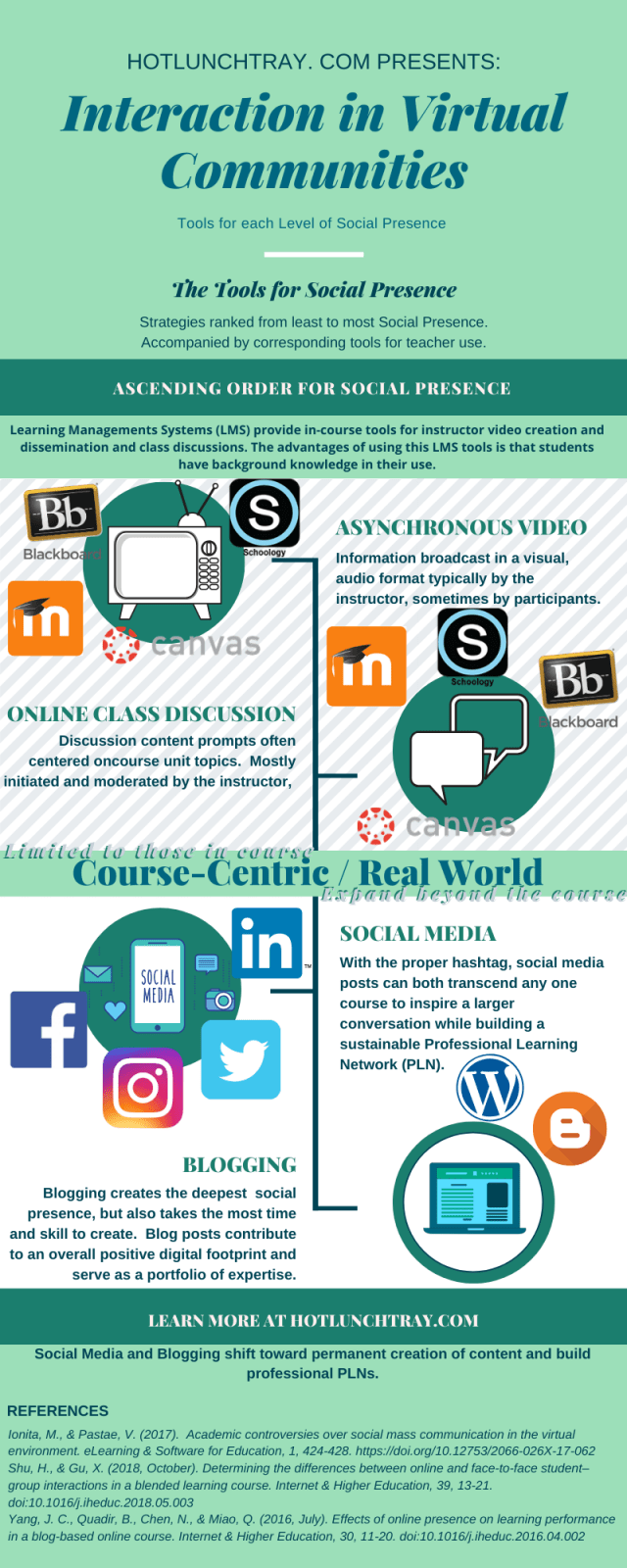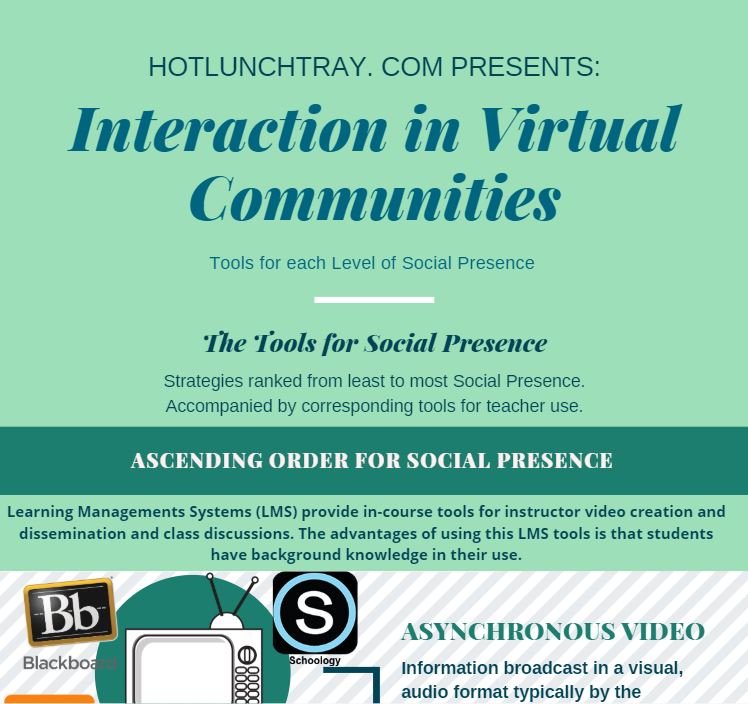
Virtual Communities
Virtual Communities include online courses and social media platforms. Online classes offer a variety of interactions. Some are expected and unexpected; there are also some interactions that do more to build social presence than others. Online classes have a limited audience but are more closely monitored. Social media opens up the world to a participant but has little to assure the correctness of behaviors.
Learning Tools
For different virtual communities, there are different tools. Communities centered around course-based learning {Read: Learning in a Course versus Social Media} often rely on tools native to the learning management system (LMS). While learning outside of LMS-based courses, different tools apply.
Social Presence
Social Presence is measured by how well instructor <-> students communications happen. The student feels the strong presence of the instructor in the class due to the instructor’s communications.
Social Media
If you wanted to scale-up your social presence rapidly you might consider social media. Because of the nature of participation on social media, one can like/favorite, one can retweet/repost, before ever investing the lengthy process to create content. Throughout these less taxing tasks, one can acquire connections. This is the quickest means to grow your professional social presence.
The change which social media offers to educators is monumental. The networking capabilities of social media offer educators connections with like-minded professionals and is unmatched. However, for all the good it brings to our profession, it also can undermine us. The death of expertise and the rise of opinion are made possible by this same social media. This equality of access to a platform for broadcasting floods each platform with “…banality… Not all people are inspired or resourceful enough to convey a message that is of interest to the rest.” (Ionita & Pastae, 2017, p. 425). How each of us uses social media impacts how we see the use of it, professionally stimulating or the death of expertise and the rise of the opinions.
Blogs
When I think about social presence I think about more than any single point in time, I think about the accumulation of presence over time. Through that lens, blogging accumulates the most content. I think of blogging as my professional portfolio to the world because of this culmination. I would say that blogging has the most potential overtime to create the largest social presence.
I write in my blog for me. The improvement I see, my trending interests, and how all my interests can intersect with others I meet through blogging. I used Twitter exclusively for educational purposes, following only educators, for at least five years; since then I have branched out, but just following some non-educators and rarely tweeting non-educational content. I include my accounts which I believe best represent me as a professional in my email signatures as possible; check out this free service I use to share my accounts: https://about.me/pennychristensen (Links to an external site.)
References
Ionita, M., & Pastae, V. (2017). Academic controversies over social mass communication in the virtual environment. eLearning & Software for Education, 1, 424-428. https://doi.org/10.12753/2066-026X-17-062






3 Pingbacks